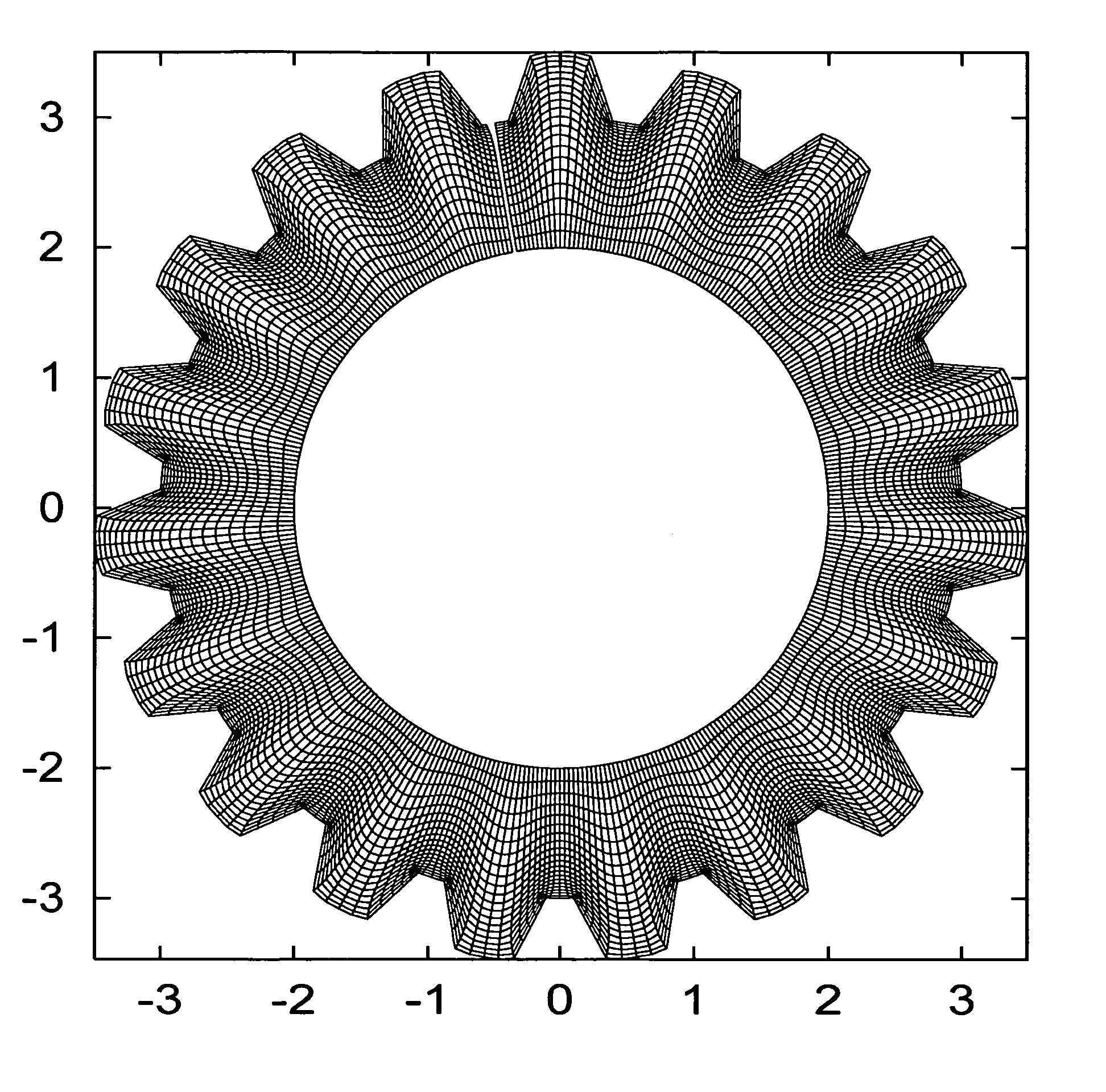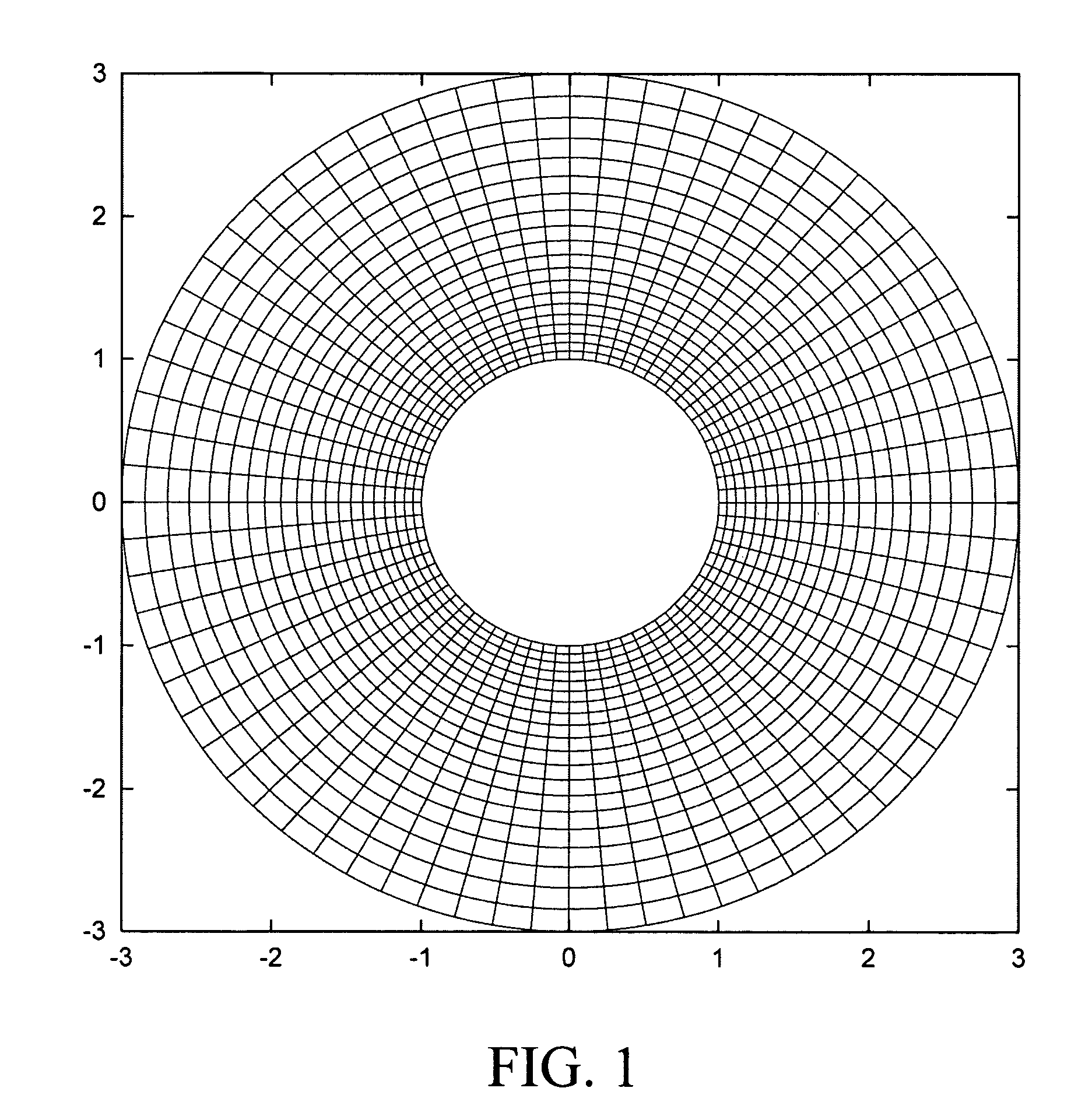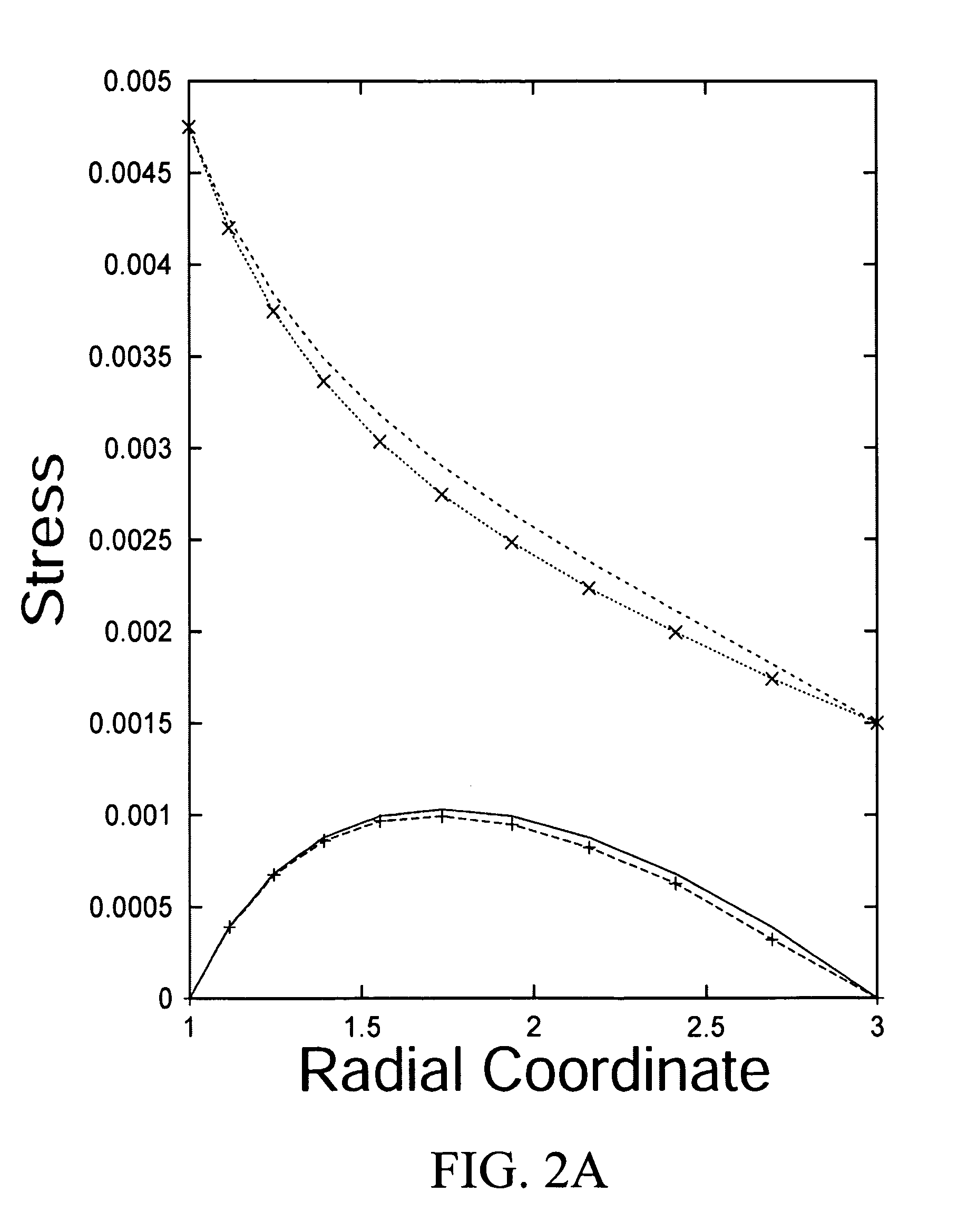Finite-difference simulation and visualization of elastodynamics in time-evolving generalized curvilinear coordinates
a generalized curvilinear coordinate and infinite difference technology, applied in the field of numerical simulation of dynamic stresses, can solve the problems of wasting time, unable to obtain temporal solutions directly, and difficulty in deriving new three-dimensional elements for different applications, and achieve the effect of facilitating autonomous updating of the computational grid
- Summary
- Abstract
- Description
- Claims
- Application Information
AI Technical Summary
Benefits of technology
Problems solved by technology
Method used
Image
Examples
Embodiment Construction
[0035]In the following detailed description of the present embodiments, reference is made to the accompanying drawings that form a part hereof, and in which is shown by way of illustration specific embodiments in which the inventions may be practiced. These embodiments are described in sufficient detail to enable those skilled in the art to practice the invention, and it is to be understood that other embodiments and variations may be utilized without departing from the scope of the present invention. The following detailed description is, therefore, not to be taken in a limiting sense, and the scope of the present invention is defined only by the appended claims and equivalents thereof.
[0036]Governing equation and boundary condition formulation in generalized curvilinear coordinates in three dimensions has been developed using the velocity-stress system of equations of elastodynamics for bodies in rotation. The attendant partial differential equations are solved using a time-stagge...
PUM
 Login to View More
Login to View More Abstract
Description
Claims
Application Information
 Login to View More
Login to View More - R&D
- Intellectual Property
- Life Sciences
- Materials
- Tech Scout
- Unparalleled Data Quality
- Higher Quality Content
- 60% Fewer Hallucinations
Browse by: Latest US Patents, China's latest patents, Technical Efficacy Thesaurus, Application Domain, Technology Topic, Popular Technical Reports.
© 2025 PatSnap. All rights reserved.Legal|Privacy policy|Modern Slavery Act Transparency Statement|Sitemap|About US| Contact US: help@patsnap.com



